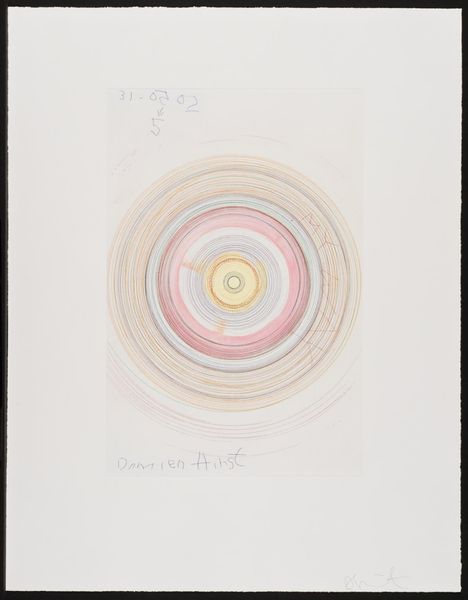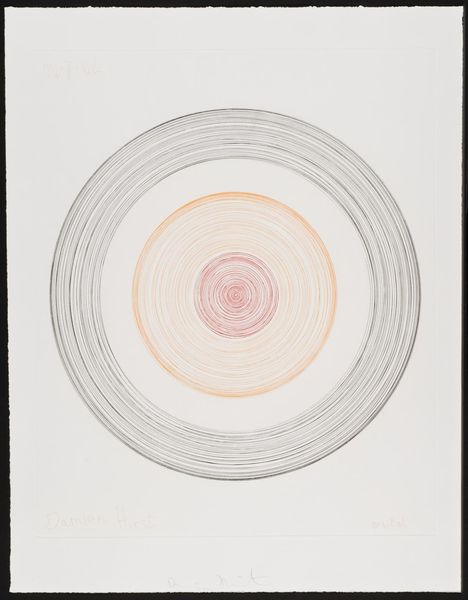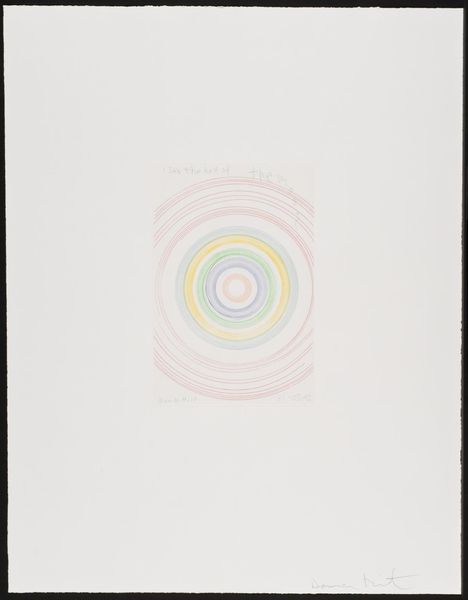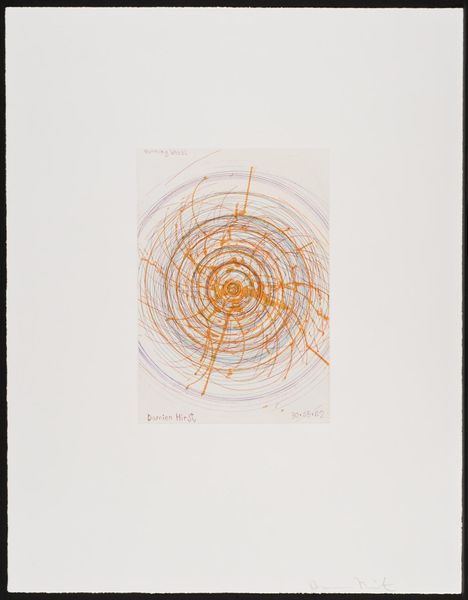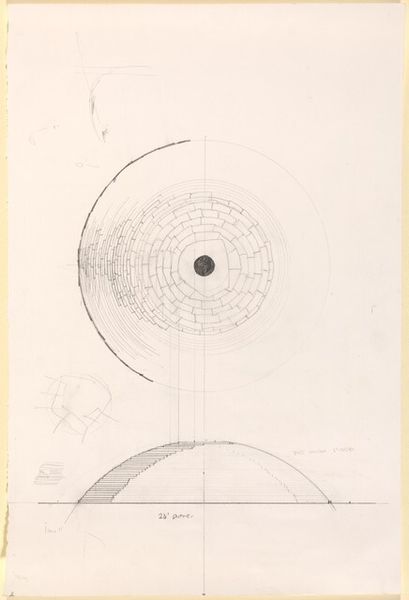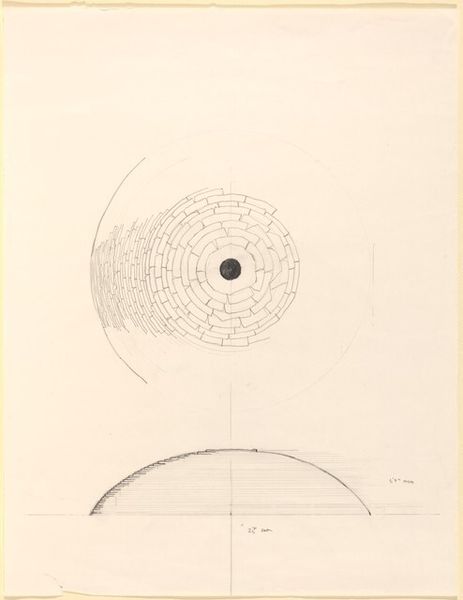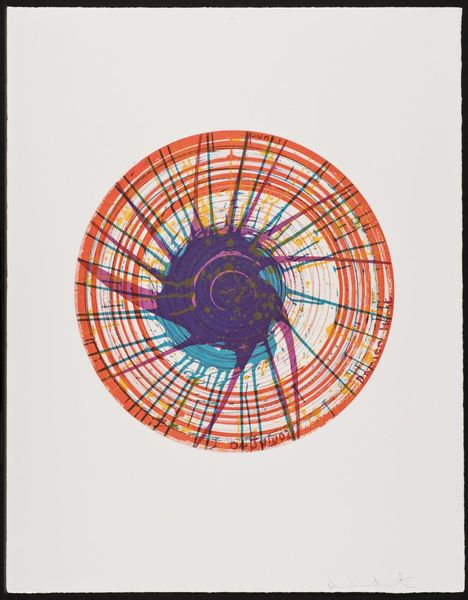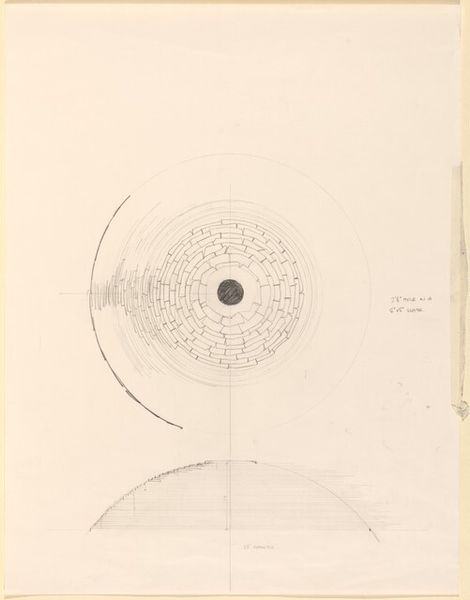
Dimensions: support: 910 x 710 mm
Copyright: © Damien Hirst and Science Ltd. | CC-BY-NC-ND 4.0 DEED, Photo: Tate
Curator: Damien Hirst's "Wheel meet again," a piece from the Tate Collections, presents us with concentric circles in delicate blues and yellows. What strikes you initially? Editor: It's surprisingly gentle for Hirst, isn't it? Almost meditative. It reminds me of looking into a wishing well, all those swirling colors suggesting hidden depths. Curator: The wheel, throughout cultures, symbolizes cycles, time, and fate. The spiraling form can be interpreted as a visual metaphor for life's recurring patterns. Editor: Or maybe it's a visual pun? "Wheel meet again"—like, we're all stuck in some repetitive loop, destined to bump into each other again and again. A bit cynical, but also funny. Curator: Perhaps Hirst is inviting us to contemplate our interconnectedness within these eternal cycles. Editor: I like that, it’s as if it leaves the viewer with a little, cyclical riddle of their own.
Comments
Join the conversation
Join millions of artists and users on Artera today and experience the ultimate creative platform.
tate 6 months ago
⋮
This is one of the twenty-three etchings that comprise the first volume of two portfolios, In a Spin, the Action of the World on Things I and II. Each etching was made by the artist in London 2002, printed on 350gsm Hahnmuhle paper, proofed and editioned at Hope (Sufferance) Press, London and published by Charles Booth-Clibborn under his imprint, The Paragon Press. There are sixty-eight sets of prints, numbered 1–68 on the colophon page, and six proof copies. Tate’s copy is the second in the edition. Each set is accompanied by a colophon page and presented in a box with an original spin painting in household paint on the cover and the title and artist’s name printed on top. In addition to etchings similar to those in the first volume, the second volume of In a Spin... includes a photograph of the night sky that Hirst took using a long exposure, recording the movement of the stars in the sky caused by the earth’s rotation, and contributing to the notion expressed in the words: the Action of the World on Things. The artist first coined this phrase in 1999, when he was explaining the origin of his spot paintings (see AR00498), differentiating two strands of his work: ‘an involvement with death and decay, and ideas and life: the action of the world on things exists somewhere, and the colour exists somewhere else. And it’s fantastic.’ (Quoted in Damien Hirst and Gordon Burn, On the Way to Work, London 2001, p.119.) In the event, the imagery of In a Spin, the Action of the World on Things I and II unites these two strands.
